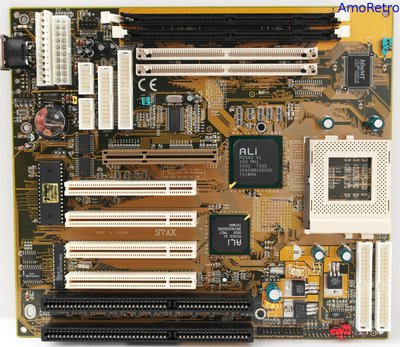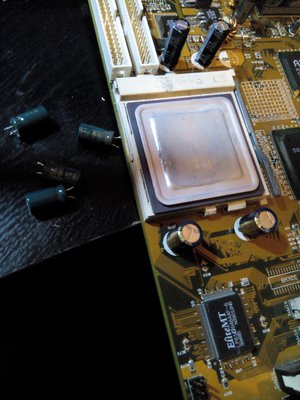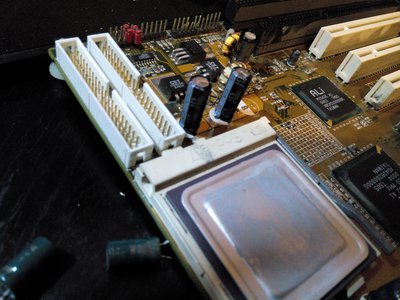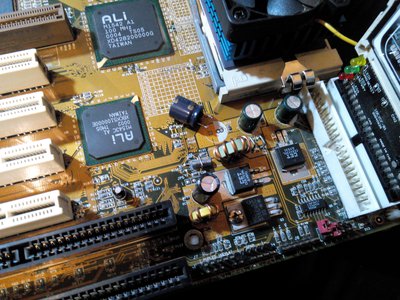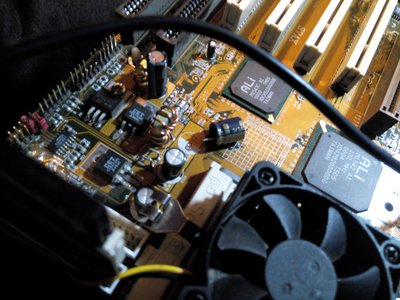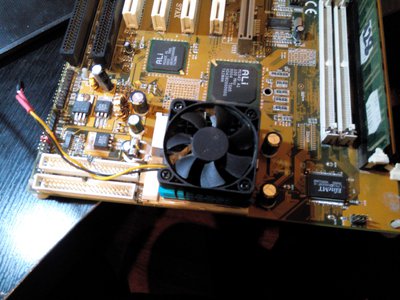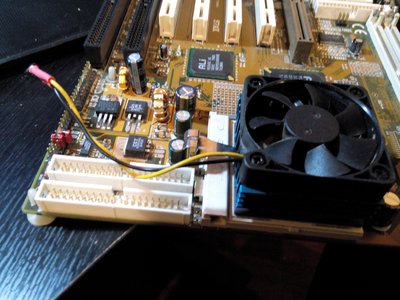First post, by kanecvr
- Rank
- Oldbie
Hello everyone! In my last batch of old PC's I picked up a Commate S7AX Super Socket 7 witch has documented K6-III and 512MB SDRAM support. It's a baby AT format motherboard with an ALi Alladin V chipset.
This thing gave me quite a few headaches, refusing to run my K6-2 450 test CPU at it's rated speed despite properly made jumper settings - same for my K6-III 450 - it would run the K6-2 at 350MHz and the K6-III at 300. The issue seems to have gone away after a few bios resets, but then the board refused to boot. It would hang at "Updating ESCD". Fixed that as well trough BIOS.
Right now I'm trying to get the board to run with a 40GB maxtor HDD, but it hangs when attempting to detect the drive. Same story for a 30GB Seagate. It seems to only detect 20GB or smaller drives. I've found several google links to a BIOS update witch allows support for drives up to 160GB, but all the links are dead.
Right now I'm running win98 se on it via a CF to IDE adapter, but the CF cards I have are pretty slow (233x) and all systems I ran off them have "freeze" periods.
Does anyone have one of these things? Do you know where I could get the latest bios for it? (VER 3.0 is the latest apparently) .
This is what the board looks like:
